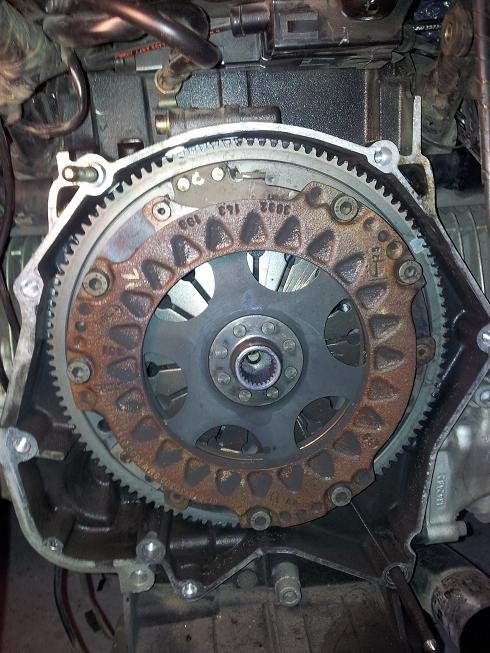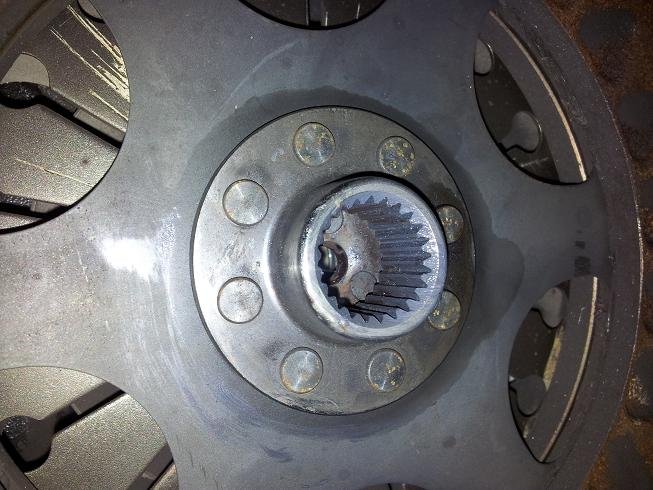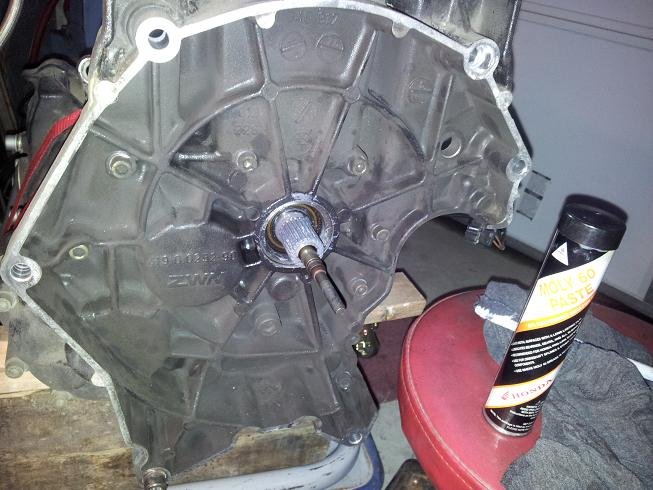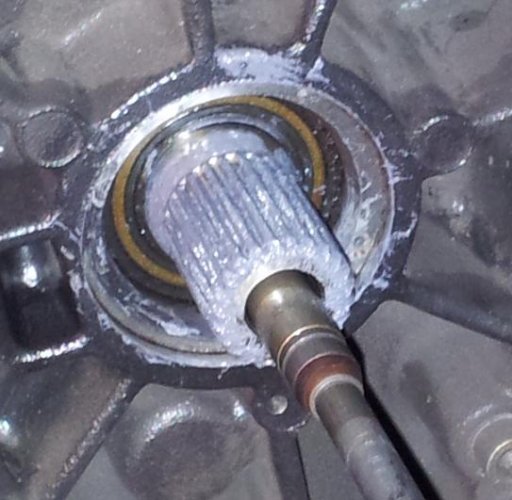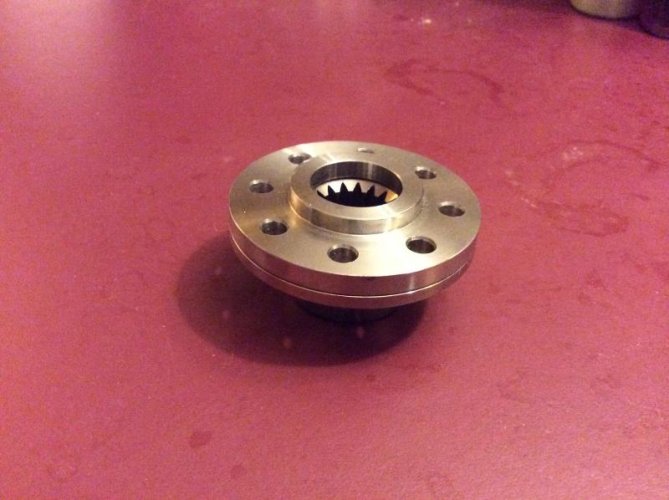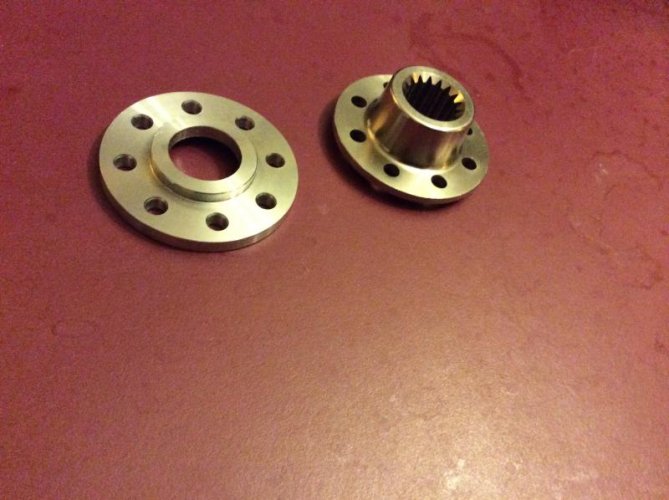cele0001
Instigator
There is no need for longer shaft AND modified clutch hub. It is either or situation. The rest of the parts are on a need to change basis and I would go as far as saying leave the input shaft alone even if it is worn. Since there is no longer shaft there is only one option. With a modified clutch hub it should be enough surface to be OK.
I currently have 5 mm spacer added to my original clutch that had a little wear on the clutch hub installed in the bike. I have little over 500 miles on it. Since I didn't have rivets I bolted the hub with 12.9 hardness 5mm bolts with lock washers and red locktite on the other end. I checked it thorough the starter hole a couple of times and it looks OK. I ordered new clutch plate that is disassembled and waiting on the next spacer and rivets to move on to phase two. Unfortunately I didn't take any pictures the first time but I will on the next removal. I have been riding it hard, probably harder than I would normally just to see if it can handle it. I think for the people that the input shaft is far gone already this is the only way to go. As I said in my case shaft was OK with no signs of wear but discolored at the failure point
There is also info floating around that if the splines are going to fail because of misalignment then they will do it within 30k miles. If they fail later then it is because of the lack of lubrication. I think this is also incorrect. I think that overall population of failures is probably normally distributed with peak at 30k but higher and lower mileage bikes fail because of the same root cause (whatever that root cause is).
IMHO it is highly unlikely to have 3-4 different root causes result in the same failure. It is usually one main driver and the rest add to the "randomness" of time in service and mileage chart of failures. Some never fail. It is also very unlikely to have a part with 100% failure rate despite all the other factors.
Another piece of info is that new clutches are made in Slovakia. Original was made in Germany. Supplier will make production and service parts on the same equipment at the same time, in order to minimize costs. Then the line is shut down and on to the next project.
The fact that the new clutch plate is made in Slovakia means that original stock was exhausted and equipment was reassembled in Slovakia, recently (labor costs). I have also read that sometime last year there was shortage of clutch plates for 1150's, probably when they ran out of the original stock and decided to reopen the production but in Slovakia. This means that original estimates of clutches needed for service parts was too low (for whatever reason), which means that failure rate is higher. Just adding facts together.
Still a lot of speculation which is why I decided to do something and not just talk, probably Chris Hariss logic also.
I currently have 5 mm spacer added to my original clutch that had a little wear on the clutch hub installed in the bike. I have little over 500 miles on it. Since I didn't have rivets I bolted the hub with 12.9 hardness 5mm bolts with lock washers and red locktite on the other end. I checked it thorough the starter hole a couple of times and it looks OK. I ordered new clutch plate that is disassembled and waiting on the next spacer and rivets to move on to phase two. Unfortunately I didn't take any pictures the first time but I will on the next removal. I have been riding it hard, probably harder than I would normally just to see if it can handle it. I think for the people that the input shaft is far gone already this is the only way to go. As I said in my case shaft was OK with no signs of wear but discolored at the failure point
There is also info floating around that if the splines are going to fail because of misalignment then they will do it within 30k miles. If they fail later then it is because of the lack of lubrication. I think this is also incorrect. I think that overall population of failures is probably normally distributed with peak at 30k but higher and lower mileage bikes fail because of the same root cause (whatever that root cause is).
IMHO it is highly unlikely to have 3-4 different root causes result in the same failure. It is usually one main driver and the rest add to the "randomness" of time in service and mileage chart of failures. Some never fail. It is also very unlikely to have a part with 100% failure rate despite all the other factors.
Another piece of info is that new clutches are made in Slovakia. Original was made in Germany. Supplier will make production and service parts on the same equipment at the same time, in order to minimize costs. Then the line is shut down and on to the next project.
The fact that the new clutch plate is made in Slovakia means that original stock was exhausted and equipment was reassembled in Slovakia, recently (labor costs). I have also read that sometime last year there was shortage of clutch plates for 1150's, probably when they ran out of the original stock and decided to reopen the production but in Slovakia. This means that original estimates of clutches needed for service parts was too low (for whatever reason), which means that failure rate is higher. Just adding facts together.
Still a lot of speculation which is why I decided to do something and not just talk, probably Chris Hariss logic also.


 . For the rest of the "wrench challenged" population
. For the rest of the "wrench challenged" population  , I am with you 100% as far as the costs go.
, I am with you 100% as far as the costs go.